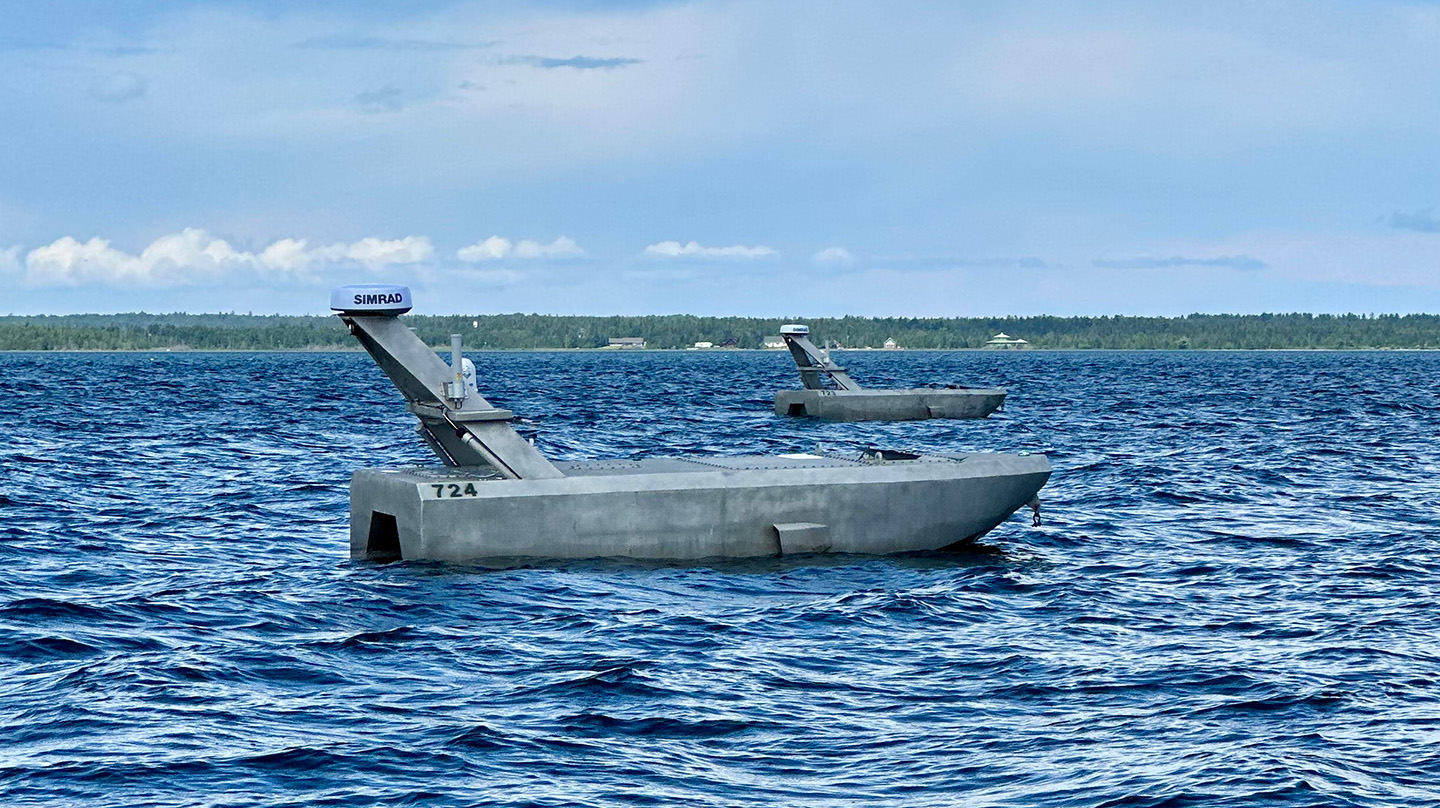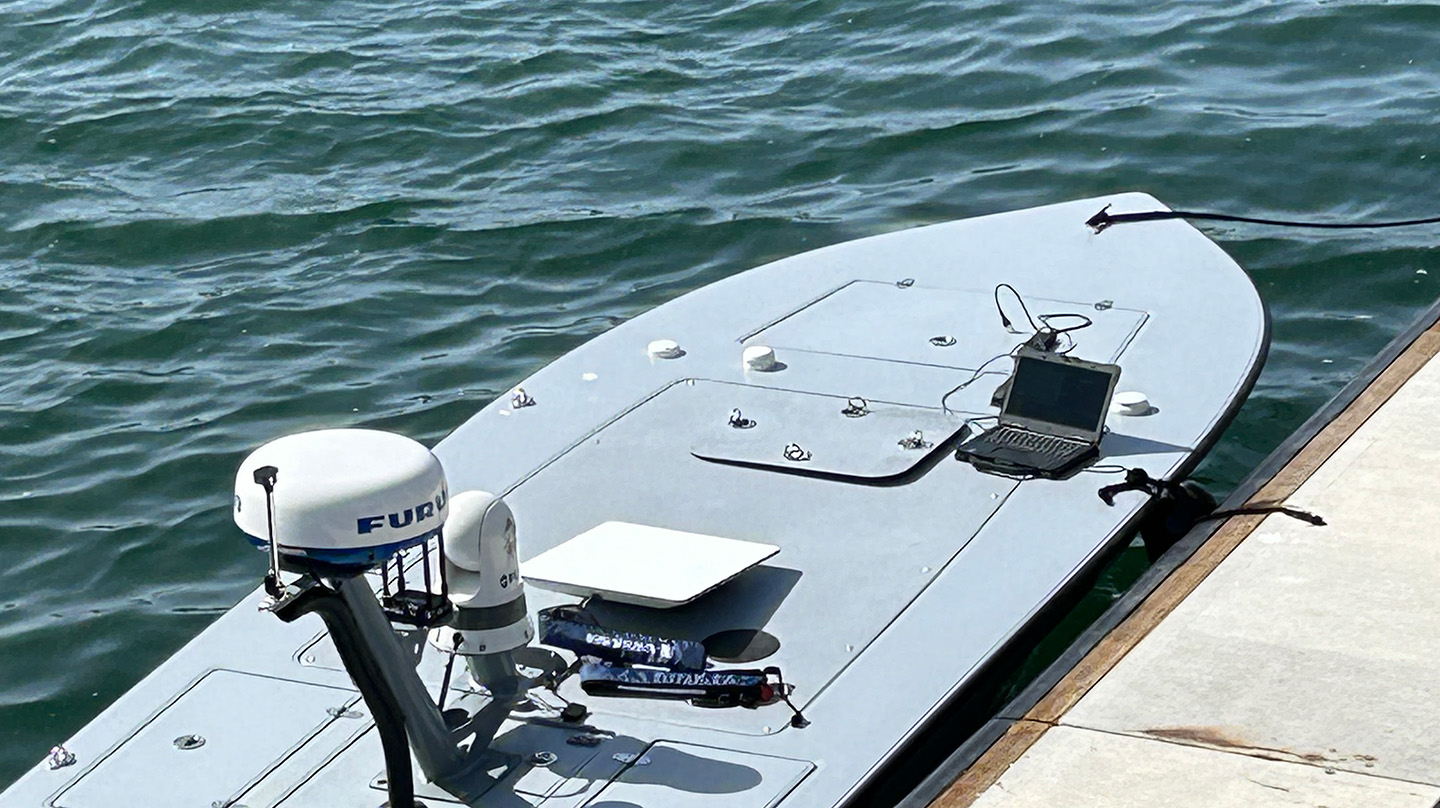News
Rapidly Fielding Autonomous Systems at Sea
Audio generated using AI voice technology.
As the Department of Defense aims to accelerate delivery of autonomous systems to the warfighter, researchers from the Johns Hopkins Applied Physics Laboratory (APL) are lending their insights and expertise to rapidly integrate, test and assess low-cost, uncrewed maritime systems under a comprehensive Office of the Under Secretary of Defense for Research and Engineering — or OUSD(R&E) — program known as ORCAstrate.
“OUSD is taking a ‘buy, try, decide’ approach to assessing commercially available uncrewed surface vehicles (USVs) and the systems within them that best suit their needs,” said Toni Salter, APL’s Emerging Concepts program manager.
“As that happens, there’s a need to modularize the software on these platforms into reusable chunks so that the government can use a specific capability across various programs,” Salter said. “This type of open architecture allows for rapid scaling of these platforms, as well as faster capability upgrades as the technology advances.”
To address that need, the Navy’s Unmanned Maritime Systems program office (PMS 406), within the Program Executive Office, Unmanned and Small Combatants, developed the Unmanned Maritime Autonomy Architecture (UMAA). This is a set of interface standards that modularize autonomy software into reusable components, enabling the Navy to rapidly insert software and reuse it across vehicles instead of paying for the same capability development with each new platform. For example, with UMAA, the Navy can swap in a specific hazard-avoidance component that is best suited to a given mission without changing any other components on the vessel’s software. This concept extends to adding new autonomous behaviors and hardware-specific components. APL has been a key partner of PMS 406 in developing the UMAA standards.
At the U.S. Pacific Fleet-led Integrated Battle Problem (IBP) 24.1 in San Diego, OUSD(R&E) and the Navy tested an UMAA-compliant operational software, known as the Autonomy Baseline Library, in small USVs. OUSD(R&E) leveraged this Navy event for the first Technology Readiness Experimentation (T-REX) of 2024. The T-REX initiative is a critical component of the Department of Defense’s Rapid Defense Experimentation Reserve (RDER) program, which accelerates the development of cutting-edge military technologies. T-REX focuses on accelerating the assessment, integration and maturing of those emerging technologies through rigorous operational experimentation.
Jointly developed by APL, the Naval Surface Warfare Center Combatant Craft Division, Naval Information Warfare Center Pacific and industry partners, the Autonomy Baseline Library was used by Navy operators to successfully command three Global Autonomous Reconnaissance Craft (GARC) USV platforms and one Common USV (CUSV) throughout the exercise, which included extended-duration station-keeping on a moving vessel, hazard avoidance and other autonomous behaviors.


